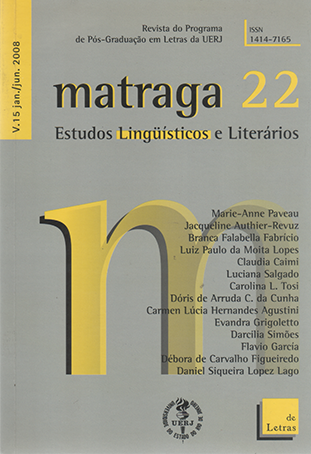Trocando em miúdos
Palavras-chave:
autoria, edição de texto, progressão textual.Resumo
É provável que se possa falar, hoje, em práticas editoriais lingüísticas e práticas lingüísticas editoriais. As primeiras são características de um texto escrito destinado à publicação – tratase de material lingüístico que demanda procedimentos técnicos como catalogação, normalizações, relativos ao próprio suporte e a sua circulação. As outras, estreitamente ligadas a estas, são um fenômeno decorrente tanto do desenvolvimento das teorias lingüísticas ao longo do século XX, como das demandas que se configuraram quanto à formação de leitores, às teorias e práticas decorrentes e à expressiva multiplicação de títulos e autores. Considerando as práticas lingüísticas editoriais em sua dinâmica histórica, focalizam-se aqui textos submetidos a tratamento editorial, nos quais se estabelece uma interlocução no corpo do original, abrindo-se, com isso, novas tramas e percursos. Com base na Lingüística Textual que entende os textos como “lugar de movimento”, pode-se observar que os textos autorais em trajeto editorial, mesmo que nunca destituam seus autores, permitem movimentos em seus traços idiossincráticos.
Downloads
Downloads
Publicado
Como Citar
Edição
Seção
Licença
AUTORIZAÇÃO
A Matraga – Revista do Programa de Pós-Graduação em Letras da UERJ está autorizada a publicar o artigo ora submetido, caso seja aceito para publicação online. Fica atestado que a contribuição é original, que não está sendo submetida a outro editor para publicação, e que a presente declaração é a expressão da verdade.
Os trabalhos publicados no espaço virtual da Matraga – Revista do Programa de Pós-Graduação em Letras da UERJ serão automaticamente cedidos, ficando os seus direitos autorais reservados à Matraga. Sua reprodução, total ou parcial, é condicionada à citação dos autores e dos dados da publicação.

A Matraga utiliza uma Licença Creative Commons - Atribuição-NãoComercial 4.0 Internacional.





